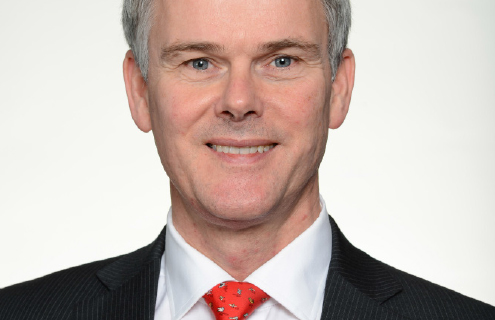HSBC
As HSBC extends its direct custody and clearing services across the pond, John Van Verre explains why the move makes sense for 2016
What were the drivers behind launching the new US direct custody and clearing service?
HSBC offers a large network with sub-custodians in various markets, and we consider that a key strength of the securities services offering. Having said that, one of those markets was the biggest in the world—the US. In the US, we were using external sub-custodians rather than our own network, which we realised was probably not the best way to go forward. We wanted to internalise as many of our clients’ assets as we could, holding them as the global custodian and the sub-custodian simultaneously.
As the US is such a large market, without an internal network there we were missing a significant section of the assets that clients hold within our network. That led us to conduct a feasibility study to see what it would take for us to start up our own sub-custody operations. The US is of course a very highly regulated environment, and we wanted to make sure that we had a full understanding of that.
We have now completed the project and implemented it. It is up and running, we are processing transactions with no problems, and we have started a phased migration process to move our existing client base from external sub-custodians on to our own solution. We hope this will be completed in Q2 this year.
HSBC already offers direct custody services in other jurisdictions—what is the significance of the timing to launch in the US?
There are two main drivers. One is that clients are putting more and more focus on finding a provider that can control the end-to-end process, because it reduces the operational risk. When a client appoints a global custodian, they are becoming more interested in what percentage of assets that custodian can manage through its own network.
The other is that regulations are introducing new liability standards for global custodians with the concept of strict liability under the Alternative Investment Fund Managers Directive (AIFMD), and UCITS V looking to implement similar liability standards. That means that if you have a liability, there is an internal benefit of controlling the whole process. It gives us a better ability to manage that strict liability and to align our external client demands with our internal operational risk process.
So, the new service can offer clients more security in two ways: with the legal and regulatory protection with regards to AIFMD and UCITS V, but also by offering a strong operational process to support that. And another side to it is the cash element. We tend to talk about securities, but clients, of course, hold cash as well, and having end-to-end control of the cash management process is important, too.
Is there an opportunity here for connecting investors from emerging markets to the US market?
What we are seeing, specifically in Asia but also in the Middle East, is an increase of wealth accumulation in emerging regions. More and more, we are seeing clients domiciled in these regions starting to invest cross-border—partly because of the wealth accumulation, but also because of a relaxation of local regulations, which is allowing them an increased allocation of assets for overseas investment.
We are very well positioned in some of those regions. We are one of the strongest banks in Asia, and we have a strong client base out there, but a significant part of that investment is flowing in to the US, so, of course, having this capability in the US will strengthen our proposition to those clients in emerging markets.
In Asia, a lot of countries are developing very successfully. The overall percentage of Asian markets in the total world economy has been growing significantly over the last few decades, and is still expected to grow further.
Where does the new offering sit in line with HSBCs custody strategy?
It is an integral part of HSBC’s strategy to have our own internal solution for the key markets. It’s great to have a presence in various global markets, but if we miss out the largest market in the world, strategically that doesn’t put us in the best position. We had to add the US to our network.
We will now have more than 50 percent of our clients’ assets managed through our own network, and more than 80 percent managed either through our network or through a market infrastructure, such as an international central securities depository. That’s going to make a big difference to HSBC and to our clients.
We have to look at trends in asset allocation to make sure that we are catering to what our clients are looking for and to get them in to markets that are the most relevant, from a size perspective. The US is a key market that we were missing, so it made sense for us to get our own solution in place.



